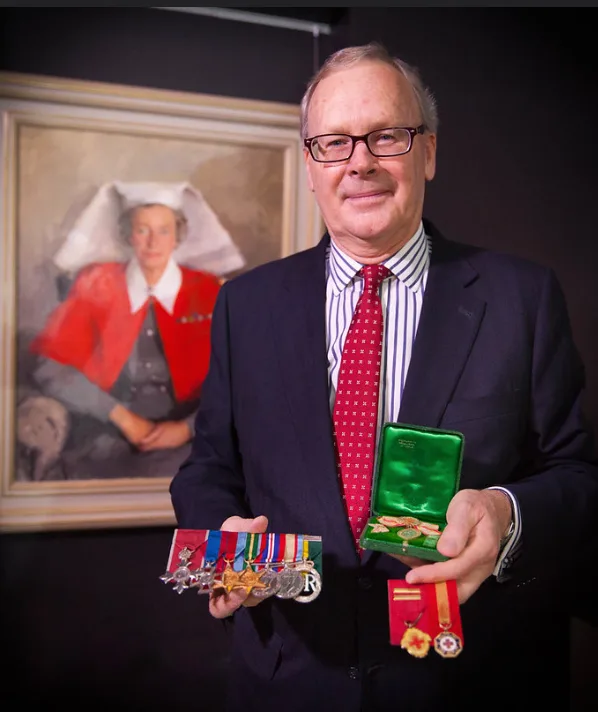Vivian Bullwinkel.
It’s a name you may not have heard of but one that will be etched into our history when the nurse’s statue is unveiled at the Australian War Memorial in Canberra later this year.
“Her care and concern for fellow human beings is her most important legacy,” Vivian’s nephew John Bullwinkel tells Woman’s Day.
“[The statue] will inspire people to learn the history about Vivian and also learn more about the vital roles of nurses in war and in peacetime.”

Lieutenant Colonel Vivian Bullwinkel was awarded the prestigious Florence Nightingale Medal.
(Image: Australian War Memorial)While he learned of Vivian’s experiences in World War II as a child, John says it wasn’t until he was older that he fully understood the extent of the atrocities committed against her and how little her country knew of her unbelievable and courageous sacrifice.
“I feel very proud of her and her achievements,” he says. “She devoted her life to the nursing profession, passionately [advocating] for better nurse education after the war. She was a beacon of hope for women.”
The statue, which was fundraised by the Australian College of Nursing (ACN), will feature a life-sized bronze portrait of Vivian, who died in 2000, in her working uniform.
The war nurse’s incredible story of survival began on Bangka Island, a small isle east of Indonesia, when she became the sole survivor of the 1942 massacre that killed 21 other Australian nurses and dozens of wounded Allied soldiers.

John is proud of his aunt’s achievements.
(Image: Australian War Memorial)Vivian, from Kapunda, South Australia, was 27 when she was assigned to the Australian Army Nursing Service’s hospital in Singapore in January 1942 after joining the group a year earlier.
But when her ship the SS Vyner Brooke was sunk by Japanese aircraft a month later following the fall of Singapore, Vivian and her fellow nurses were ordered into the water and shot at from behind.
Despite being shot in her abdomen, Vivian miraculously survived and feigned her death, before she hid in the nearby jungle and helped care for a wounded British private. The pair surrendered to the Japanese 12 days later and were held as prisoners of war in a camp where Vivian would stay for more than three years before her release.
“As we were thigh-deep in the surf they opened murderous fire, mowing us down like a scene I saw in a film as a child. Women around me shrieked, stiffened and sank,” Vivian recounted to The Age in 1945.
“I was hit in the left side and fell unconscious in the water. I lay still, partly because something told me I would be killed if I moved and partly because I did not care, anyway.”

She trained as a nurse and midwife in Broken Hill.
(Image: Australian War Memorial)She returned to Australia in 1945 weighing just 25 kilograms after suffering years in captivity, where she hid her bullet-riddled uniform and diary in order to survive.
If her Japanese captors knew she had survived the Bangka Island massacre, she would have been in danger.
“Vivian often spoke of the women who were in camp with her and how close they all were. I knew quite a few of them and they were remarkable women,” says John.
“People can’t imagine the privations they went through.
“She felt she had an obligation to ensure that people knew of the nurses who died on Radji Beach and she spent a lot of time with the families of those nurses and much of her life working to honour them.”
Despite retiring from the Army in 1947, Vivian was committed to serving her country on numerous fronts, including rescuing orphaned children during the Vietnam War, raising funds for a new nurses’ memorial in Melbourne and serving as ACN president.

Vivian gave evidence at the International Military Tribunal in Tokyo after the war.
(Image: Australian War Memorial)She married Colonel Francis West Statham in 1977 and returned to Banka Island in 1992 to unveil a shrine to the nurses who died.
Vivian died aged 84 in Perth.
A lovely detail people may not realise when they first see Vivian in her bronzed glory is the 21 stainless steel discs located on the sculpture’s base – to represent each of the women killed – aligned as a reflection of the stars that would have been visible in the night sky on that fateful night.
“Not only did Vivian have a remarkable story based around World War II, but she went on to do great things for our profession,” says ACN CEO Kylie Ward.
“I get goosebumps talking about it. The beautiful base will ensure Vivian stands with the other nurses. We will make sure their memories survive.”

Kylie worked with artist Charles Robb to create the sculptural work.
(Image: Supplied).png?fit=900%2C553)

